Camigliano wines visiting Giannino 1899
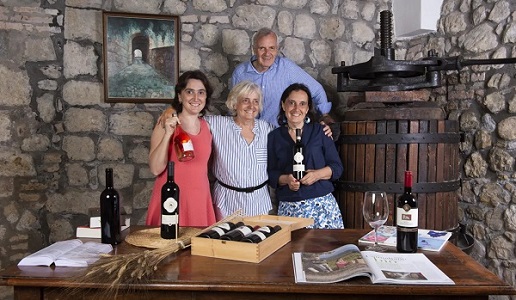
The encounter between the wines of a Milanese doc who has made Montalcino his buen retiro and a historic restaurant that has chosen a traveling, Sardinian chef as its guide to a more modern and cosmopolitan cuisine: a synthesis of a Milan that never stops changing.
"As a child I played ball in the Galleria, but today the city is something else: dirty, hectic, chaotic ... when I understand you, I can't wait to go back to the country." He was a Milanese doc Gualtiero Ghezzi, born and raised a stone's throw from the Duomo. But today, woe betide keeping him away for more than a day from his beloved Ilcinese countryside. In fact, for the past few years his new home has been Camigliano, home of his eponymous farm, a medieval hamlet of 22 souls, mostly retirees who live on subsistence from their vegetable garden, of which he and his wife Laura feel proudly a part.
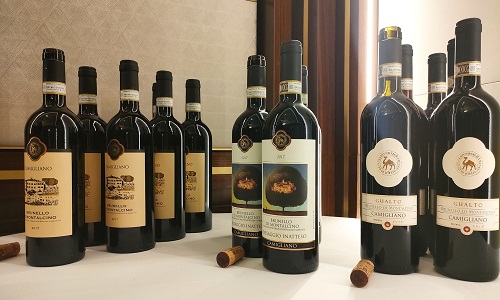
Isabella and Silvia, the two daughters who assist them in the management of the company, taking care mainly of relations with foreign countries, have instead remained in Milan. "At one time, the journey from Milan was a real feat; just to reach Camigliano from Montalcino took 40 minutes, with a ford to cross; today, fortunately, only 10," Gualtiero says. Yet, in 1957, his father Walter fell in love with this remote and disused place, and decided to buy it as an investment. "He was always someone who loved to fix broken things: this dilapidated structure was the last of his ventures."
At that time the farm was multifunctional, with pig and cow farming, then, in the early 1990s, thanks to Gualtiero, the specialization in wine, with the planting of new vineyards (about 90 ha out of a total of 500, divided between olive trees, woodland and arable land) and the creation of the winery. Further changes were made in more recent years, with the cellar being moved underground, "in this way we managed to reduce the environmental impact, both energetic and visual, by covering the roof with a lawn and a magnificent mimosa tree," says daughter Isabella, and the planting of new experimental clones selected by the University of Pisa. All around, woods and wild scrub "because," as Gualtiero says, "the vines should be put where they are well, the rest must remain nature," a care that allows him to carry out a totally organic viticulture since 2017. Not the least of his operations is the renovation of old farms and houses in the village to accommodate visitors and wine tourists, which is restoring new socio-cultural life to the entire community.
Assisting him in the winery, nomen omen, is winemaker Cantini, who has expanded the winery's classic range of Brunello and Rosso di Montalcino, with the more recent labels of Vermentino and Rosato from the Gamal line, pandering to the possibilities of the vineyards (if the altitude is homogeneous around 250 meters, the geological composition of the soils, on the other hand, is quite varied, with the presence of sand, silt, clay, marl and fossils) and the tastes of the market, to reach a production of about 330 thousand bottles, joined by two grappas and an excellent organic extra virgin olive oil, obtained from Leccino, Frantoio, Moraiolo and Correggiolo varieties.
The evolution Giannino dal 1899
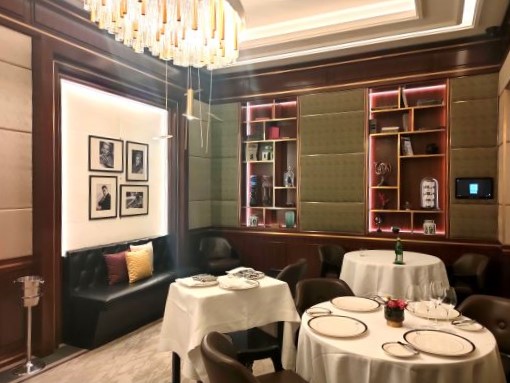
To present the most interesting elements of the company's range, a historic Milanese location was chosen, a bastion of a Milan that is no more, but with which it has in turn changed, continuing to do so today with courage and determination. We are talking, of course, about Giannino dal 1899, today among the Locali storici d'Italia, which is based under the arcades of via Vittor Pisani, right in the center. The brand's origins date back to the 19th century, when it was a simple suburban fiaschetteria, before moving to its current location and gradually becoming the most beloved eatery of the Milanese jet set in the 1980s and 1990s. Its cuisine and service have been able to evolve and ride the times and fashions, in years when the city and its population have changed radically; it is therefore not surprising that today, fresh from a very elegant restyling, the restaurant also chooses to focus on a more modern cuisine, able to wink at an international audience, now a true protagonist of the city.
The onerous task has been entrusted from January 2022 to Sardinian-born chef Maurizio Lai, corporate executive chef also of Giannino's London location: a passionate globetrotter who in 18 years has collected haute cuisine experience in London, Beijing and Dubai. Asian and Middle Eastern influences are present in his cuisine-"China was one my first experience abroad and it has remained in my heart"-without losing sight of Sardinian origins. But how do these declinations combine with the proposal of an authentic Milanese restaurant like Giannino? "Indeed, it may seem anomalous to find a Sardinian chef in such a context, but the work I am trying to carry out is precisely that of taking dishes from 100 years ago and transporting them to the present, in a global context, reinterpreting them. A key element of this work is, for example, the search for savoriness, for umami: in short, to propose something ancient that has a completely new taste, and usability. Then it's obvious that there are untouchable dishes: yellow risotto and prime rib are our cornerstones, and woe betide us if we change them!"
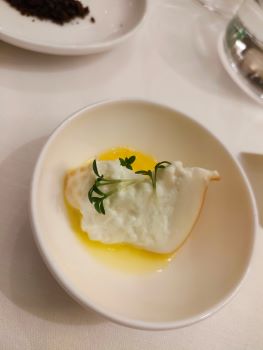
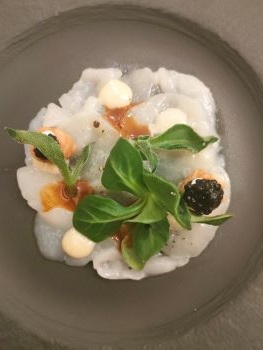
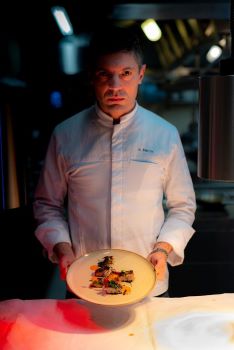
The meeting Giannino-Camigliano
The menu-meeting with Camigliano wines that was offered to us proved consistent with this vision: innovation (expressed essentially in the choice of fusion ingredients) centered and well-applied; clean, decisive flavors; novel textures and artful cooking (as with the cheek).
We started with three pleasing amuse-bouche of Quinoa and urchin, Smoked burrata and saffron tomato water, and Zucchini and mozzarella, accompanied by Rosato Gamal: saline and thirst-quenching sip, with good minerality, particularly pleasant together with the sea urchin pulp, whose marine intensity it amplified.
Second outing, and second pairing, an off-paper dish, the Carpaccio of scallops, glacialis salad, miso mayonnaise and cannoli with sour cream and caviar, alongside the Vermentino Gamal, made from a Corsican clone of the variety: a very intense fruity goblet with lingering aromaticity, even a tad exuberant for the course, in which the relationship between saltiness and sweetness was impeccable.
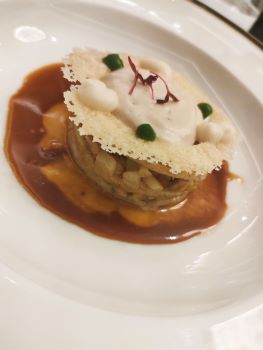
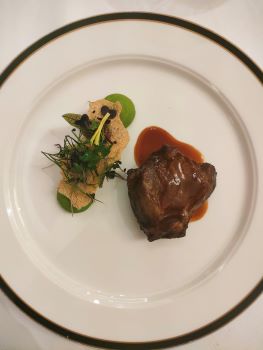
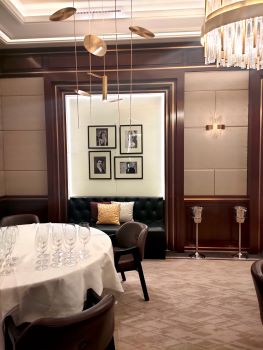
This was followed by two examples of tradition revisited by the chef: the buckwheat lasagnetta and white veal ragout, modernized in taste but without losing enjoyment, and the masterful Veal cheek, soft potato with watercress and black cabbage, in which the creamy textures and the meltiness of the meat were balanced by the crispness of the wafer and the bitterness of the vegetable. For these two dishes, the winery's three winning horses, the Brunellos, were "inconvenienced": the Brunello di Montalcino 2017, the Paesaggio Inatteso 2017 and the Gualto Riserva 2016. Three very different glasses - balsamic, savory and warm the first; dark, spicy and thick the second; ample, toasty and mouthwatering the third - and confirmation that when a great wine and a great dish meet, the search for the perfect pairing is pure virtuosity.
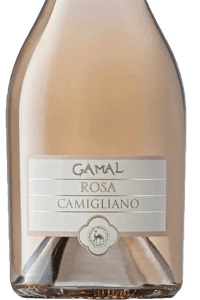 Toscana Rosato Gamal 2021
Toscana Rosato Gamal 2021
86/100 - € 11
80% Sangiovese, 20% Syrah. Acciaio, 4 mesi sulle fecce. Bel rosa tenue. Naso delicato d’agrume. Sorso fresco, salino e dissetante, di buona persistenza agrumata.
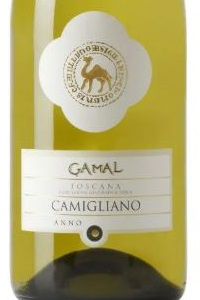 Toscana Vermentino Gamal 2021
Toscana Vermentino Gamal 2021
88/100 - € 15
100% Vermentino. Acciaio, 5 mesi sulle fecce. Paglierino chiaro. Molto intenso di fiori, agrumi (pompelmo), melone invernale ed erbe aromatiche. Sorso di media struttura, sapido, intenso, di persistente aromaticità.
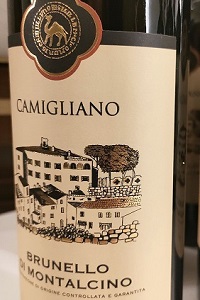 Brunello di Montalcino 2017
Brunello di Montalcino 2017
89/100 - € 27
100% Sangiovese grosso. Matura 24 mesi in botti di rovere e 12 in bottiglia. Rubino appena sfumato. Potente il naso di cassis, spezie e legni balsamici; bocca strutturata ma fluida, grazie alla piacevole sapidità, e finale caldo.
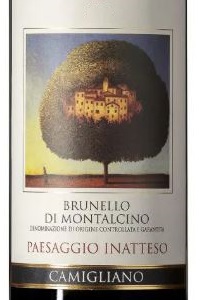 Brunello di Montalcino Paesaggio Inatteso 2017
Brunello di Montalcino Paesaggio Inatteso 2017
92/100 - € 45
100% Sangiovese grosso. Matura 30 mesi in botti di rovere. Rubino scuro. Profilo scuro e un filo austero di spezie e frutti di bosco poco maturi. Bocca in linea, tesa, dai tannini giovani e fitti, con congedo caldo e speziato. Un vino di carattere, di promettenti prospettive.
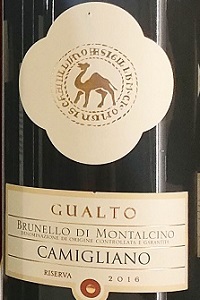 Brunello di Montalcino Riserva Gualto 2016
Brunello di Montalcino Riserva Gualto 2016
95/100 - € 75
100% Sangiovese grosso. Matura 36 mesi in botti di rovere e 2 anni in bottiglia. Rubino appena degradato ai bordi. Olfatto goloso di tostature di cacao e caffè, spezie dolci e marasca sciroppata, con note officinali e balsamiche a dare giusto tono e freschezza. Coerente l’assaggio, con tannini ben disciolti, acidità rinfrescante e piacevole salinità, per un lungo e intrigante finale tostato.
Related Products
| Product | Producer | Date of publication | Author | Read | |
|---|---|---|---|---|---|

|
Rosato Gamal 2021
Toscana |
Camigliano | 05/26/22 | Flavia Rendina | |

|
Gamal 2021
|
Camigliano | 05/26/22 | Flavia Rendina | |

|
Brunello di Montalcino 2017
Brunello di Montalcino |
Camigliano | 05/26/22 | Flavia Rendina | |

|
Paesaggio Inatteso 2017
Brunello di Montalcino |
Camigliano | 05/26/22 | Flavia Rendina | |

|
Gualto 2016
Brunello di Montalcino |
Camigliano | 05/26/22 | Flavia Rendina | |

|
Camigliano
|
05/03/17 | Redazione |
Gualtiero Ghezza is a patron and what he has done and continues to do for the hamlet of Camigliano is praiseworthy. He has been a driving force behind initiatives to relaunch the town, including a... Leggi tutto |

 Italiano
Italiano






